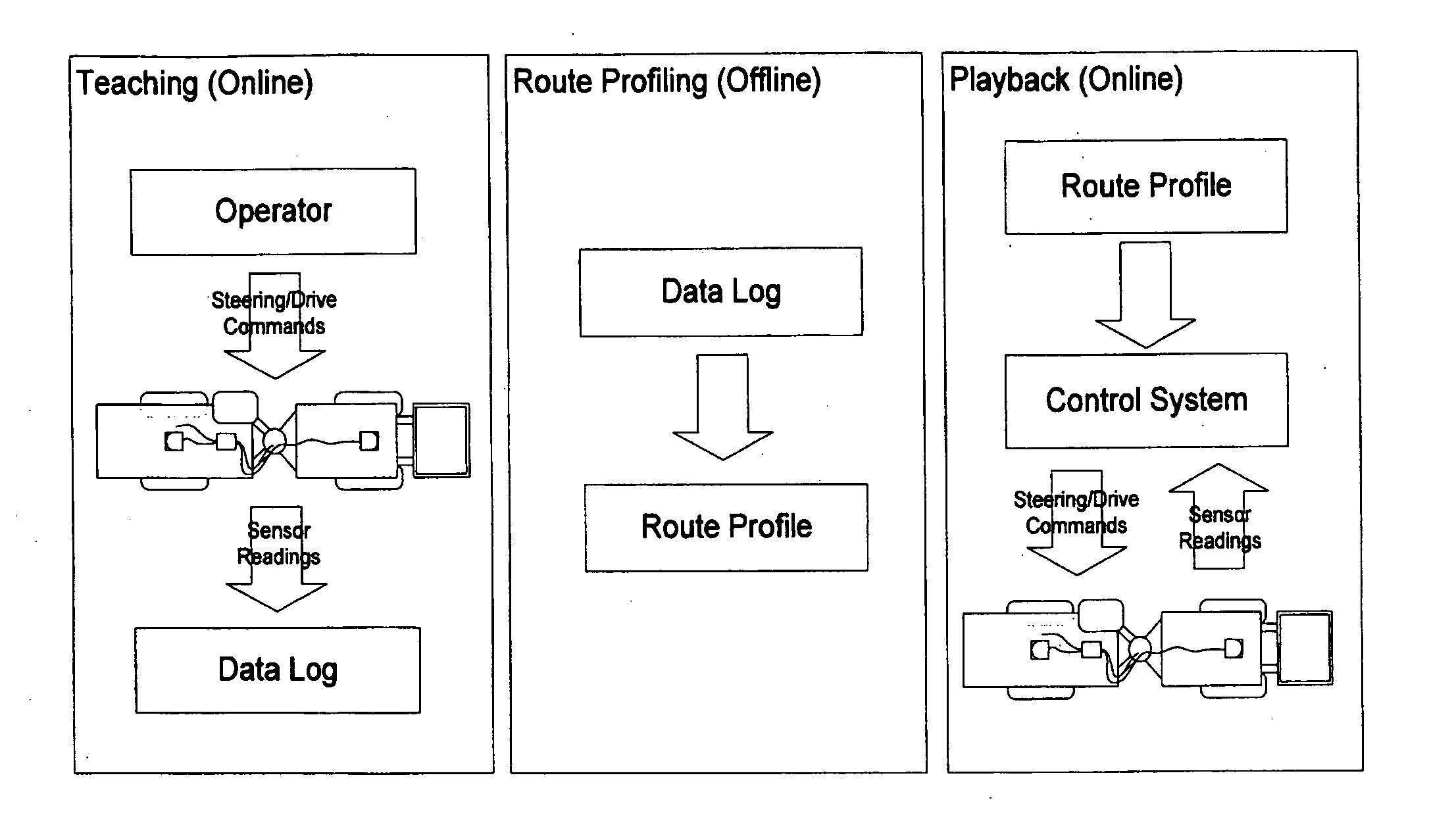Guidance, Navigation, and Control System for a Vehicle
a technology of navigation and control system, applied in the direction of programme control, distance measurement, instruments, etc., can solve the problems of inability to reliably operate a system that rely entirely on the topology of the classification tunnel to guide, the inability of automatic solution to provide good positioning information from this (external) system, and the high cost of installing the track/strip/light-rope infrastructur
- Summary
- Abstract
- Description
- Claims
- Application Information
AI Technical Summary
Benefits of technology
Problems solved by technology
Method used
Image
Examples
Embodiment Construction
[0060]As used herein, the phrase “passageway environment” means any space where vehicles might travel that contains walls, barriers, or obstacles such that said vehicles must travel amongst these objects. Examples of passageway environments include streets among buildings, building hallways, office spaces, underground mines, tunnels, caves, etc. Herein, it is assumed that passageway environments can be represented by maps.
[0061]As used herein, a “map” refers to a representation of a region of a passageway environment.
[0062]As used herein, the phrase “metric map” means a map in which the notion of distances between points on the map is defined.
[0063]As used herein, the phrase “topological map” means a map in which the notion of distances between points on the map is not defined.
[0064]As used herein, a “consistent map” refers to a map in which:[0065]a) no two (or more) points on the map represent the same point in the physical environment;[0066]b) no one point in the map represents tw...
PUM
 Login to View More
Login to View More Abstract
Description
Claims
Application Information
 Login to View More
Login to View More - R&D
- Intellectual Property
- Life Sciences
- Materials
- Tech Scout
- Unparalleled Data Quality
- Higher Quality Content
- 60% Fewer Hallucinations
Browse by: Latest US Patents, China's latest patents, Technical Efficacy Thesaurus, Application Domain, Technology Topic, Popular Technical Reports.
© 2025 PatSnap. All rights reserved.Legal|Privacy policy|Modern Slavery Act Transparency Statement|Sitemap|About US| Contact US: help@patsnap.com



